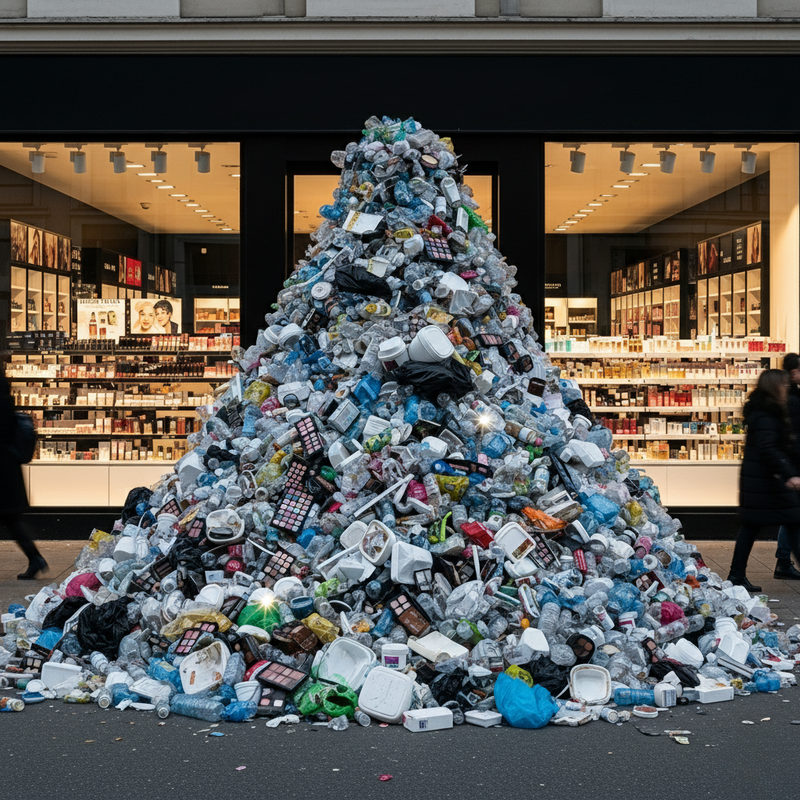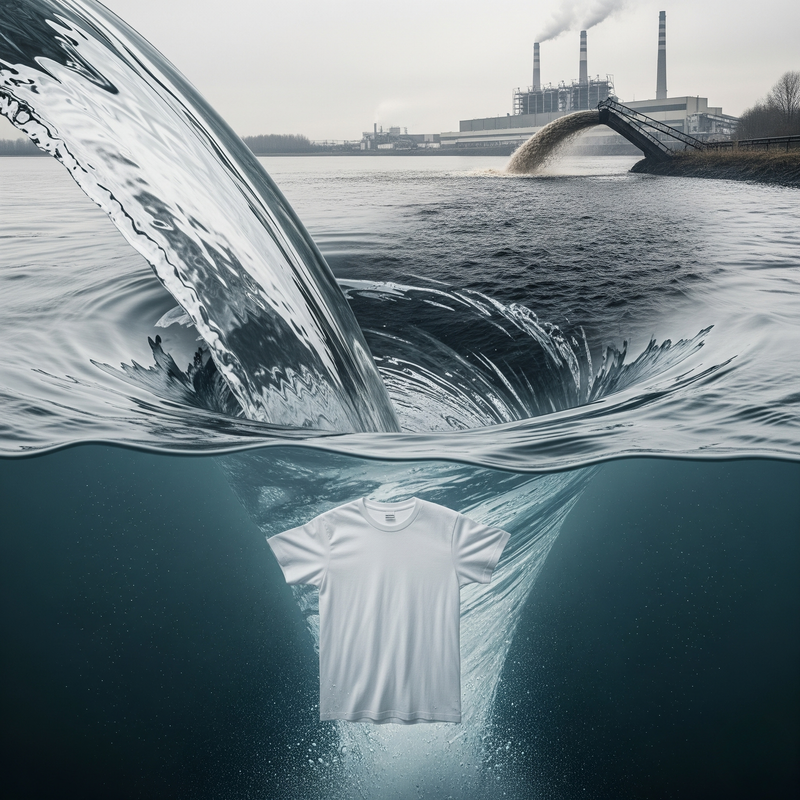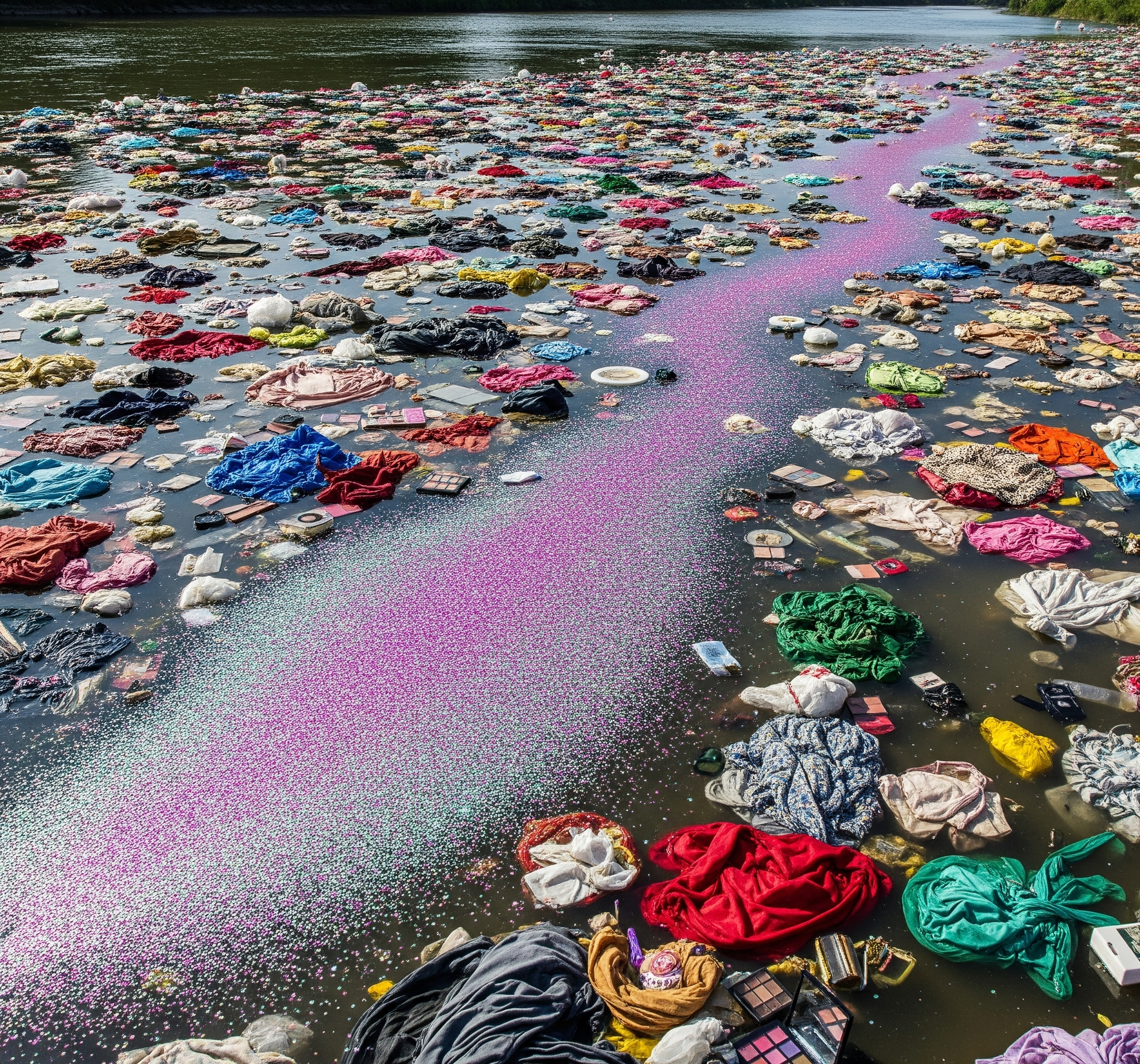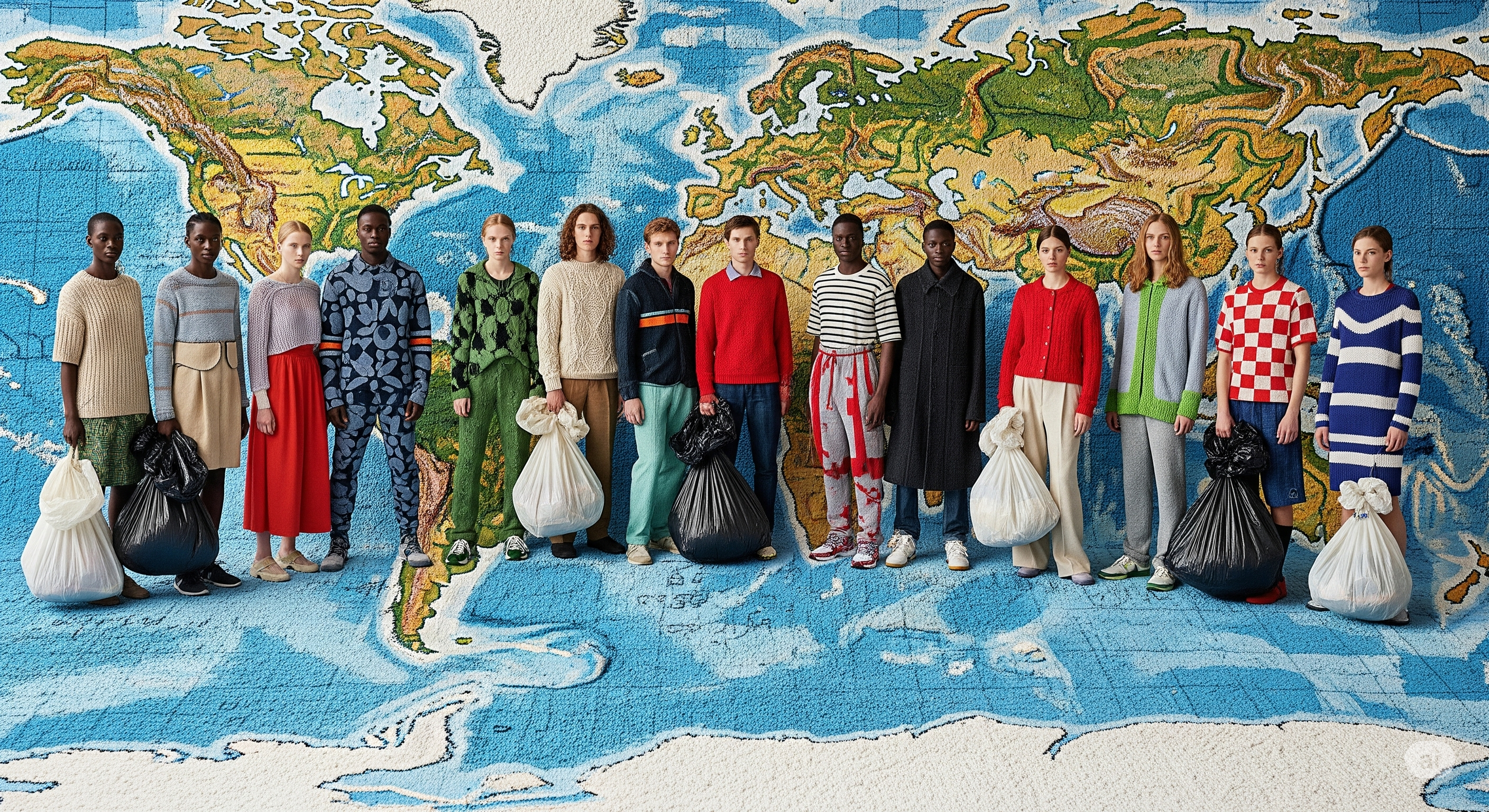Fashion and beauty are two of the most polluting industries in the world. Fashion produces nearly 10% of global carbon emissions, more than international aviation and shipping combined. The beauty industry adds almost a billion tons of CO₂ annually and creates over 120 billion plastic packaging units. These industries thrive on overproduction, synthetic fibers, and air-shipped supply chains, while the Global South bears the brunt of the toxic fallout.

Carbon Footprint
Fashion is one of the biggest climate polluters.
- 10% of global emissions
- 1.2B tons CO₂ from fast fashion
- Polyester = 70M barrels of oil
✅ Solution: Switch to low-impact fibers, slow fashion, and regenerative farming.

Plastic Waste
Beauty packaging drives a toxic waste crisis.
- 120B units produced yearly
- Dumped in Global South landfills
- Rivers & soil choked with plastic
✅ Solution: Refillable packaging, biodegradable materials, and stricter recycling systems.

Water Scarcity
Fashion drains water and poisons what’s left.
- Shirt = 2,700L water, jeans = 2,000L, leather shoes = 2,100 liters
- 20% of industrial water pollution from dyeing
✅ Solution: Closed-loop dyeing, organic cotton, and wastewater treatment at scale.

Pollution From Supply Chains
- Factories dump toxic dyes, chromium, and arsenic into rivers in Bangladesh, India, and China.
- 22,000 tons of textile waste enter Bangladesh rivers annually; India sees 40 million liters of untreated wastewater flowing into the Ganges daily.
- Workers, many of them women and children, are routinely exposed to unsafe chemicals.
Toxic Mining
Gold mining: 180M tons of toxic waste yearly
Mica mining: child labor in hazardous conditions
Leather & minerals: heavy environmental footprint
Microplastics
Synthetic fabrics are silent polluters of water systems worldwide.
Polyester, nylon, acrylic release microplastics
Contaminate 83% of global tap water
Persistent pollution threatens marine life
Greenwashing
60% of sustainability claims are misleading
Overhyped “eco-friendly” products create consumer eco-fatigue
Shoppers struggle to separate truth from marketing

Emerging Solutions
- Indigenous-led conservation protects biodiversity and promotes ecological stewardship.
- Innovative materials: Piñatex, MIRUM®, orange peel leather, and mushroom-based alternatives reduce environmental harm.
- Biotechnology enables sustainable production of ingredients like hyaluronic acid and retinol.
- Regenerative agriculture and closed-loop fashion models offer pathways for recycling and circular design.
Ethics
Ethics & People
Ethics & People
Behind every thread and formula is a choice: dignity or exploitation, sustainability or harm. Let's unpack the hidden costs of fashion and beauty, and explore how conscious design can reshape our future.
Read more
Ethics & Animals
Ethics & Animals
The world of fashion and beauty captivates with its promise of elegance and allure—luxurious textures, vibrant hues, and the dream of transformation. Yet, beneath this glittering facade lies a stark, often brutal reality: a profound ethical crisis impacting countless animals, from the smallest silkworm to the largest cattle.
Ethics & Technology
Ethics & Technology
AI tools and emerging tech are transforming creativity, healthcare, social media, and more. With deepfakes, data privacy issues, and rising inequality, we face urgent ethical challenges. Explore how we can balance breakthrough innovation with responsibility in a rapidly changing world.


